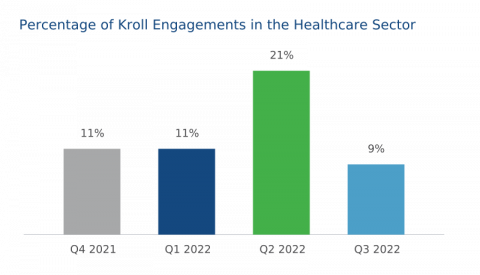Q4 2022 Threat Landscape Report: Tech and Manufacturing Targeted as Ransomware Peaks for 2022
In a year where headlines were dominated by the global economic and geopolitical uncertainty around Russia’s war on Ukraine, 2022 saw a threat landscape that was both volatile and fragmented, largely due to the war. As the year drew to an end, ransomware hit a peak, primarily due to the rise in attacks impacting the manufacturing, health care, technology and telecommunications industries.



